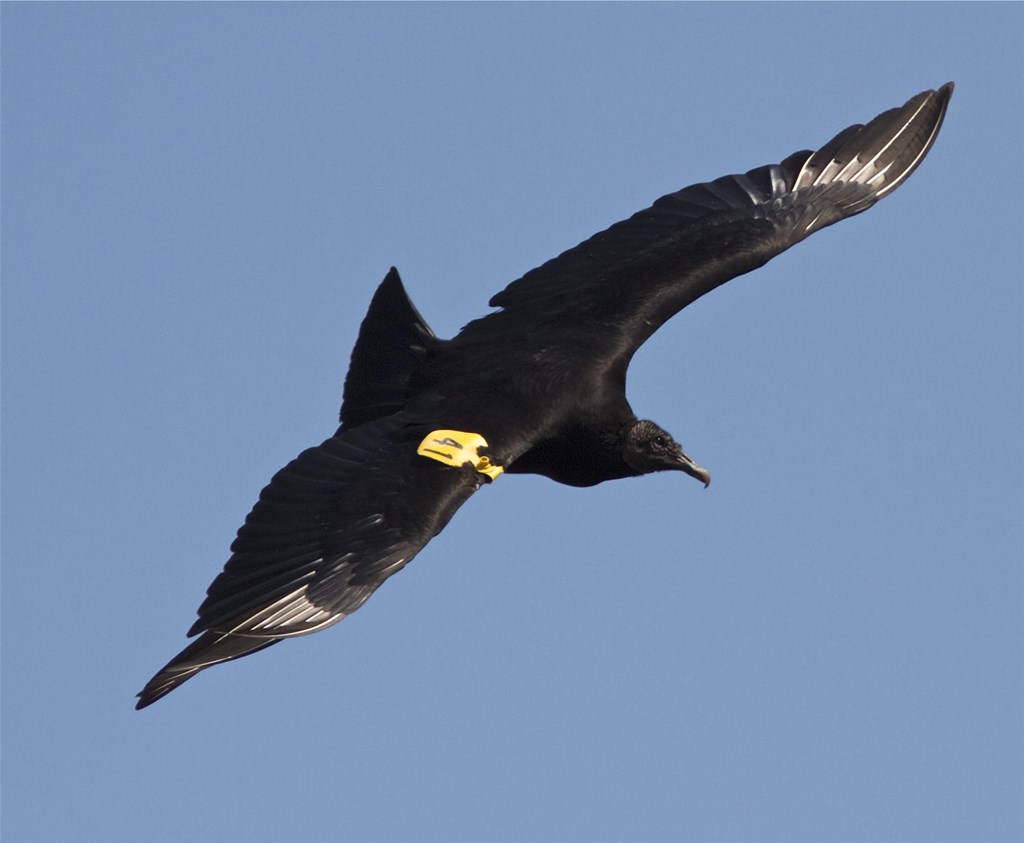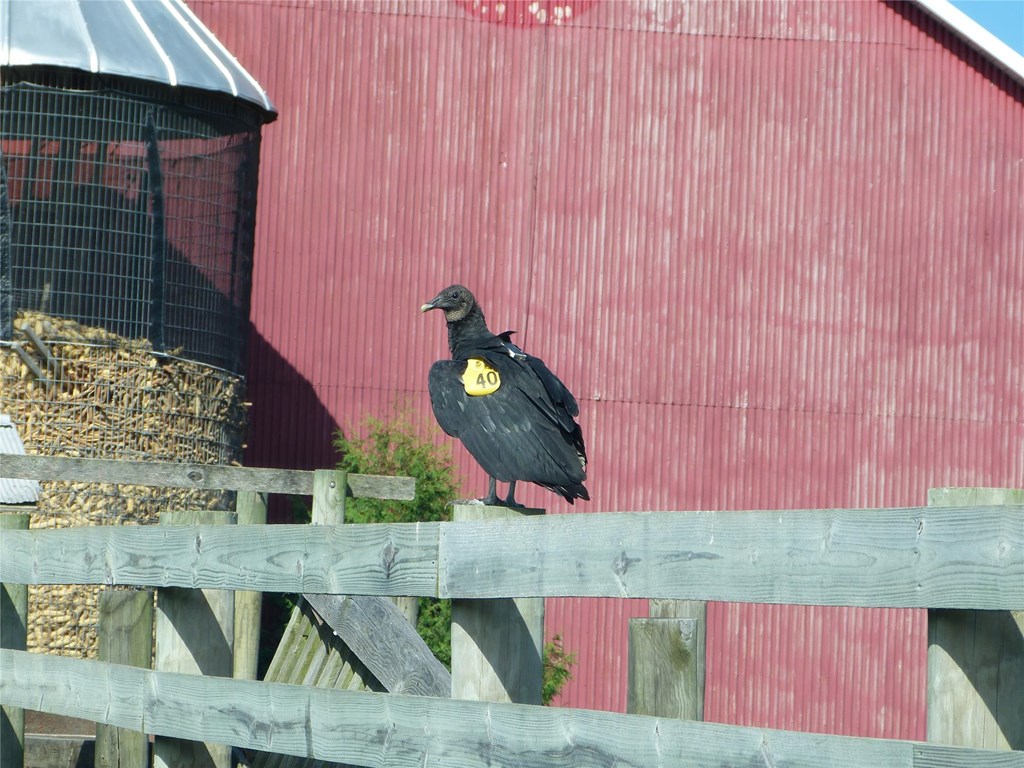Black Vulture Research

The black vulture is a common scavenger throughout most of its range, which extends from southern New York in the United States south to central Argentina. In the United States it is largely found in the southeast with a small population in southern Arizona. Black vultures are considered non-migratory throughout most of their range, but in winter many individuals withdraw from the extreme northern portions.
Autumn migration counts at Hawk Mountain Sanctuary average 140 individuals.
Black vultures lack a highly developed sense of smell and cannot find carrion by scent alone. They rely on the superior carrion finding skills of turkey vultures, following them to carcasses where they can often out-compete turkey vultures. Black vultures feed mostly on carrion but have been known to attack and kill young domestic animals presenting a problem for farmers in some parts of their range. Despite their abundance, they remain understudied and little is known about their movements and life history, such as mortality and nesting success.
Collaborative Work
We have been using a combination of satellite telemetry and wing-tagging to better understand the movement ecology of black vultures. We have tagged 100 vultures with yellow tags in Pennsylvania, including over 40 nestlings tagged at nests in southeastern Pennsylvania and Delaware. We rely on citizen scientists to report sightings of wing-tagged vultures in order to map their movements and determine their survival.
In addition, we have worked with colleagues in Arizona and Argentina to put satellite tracking devices on black vultures to study their movements. To date, we have tagged 11 black vultures with satellite trackers; 8 in Pennsylvania, 1 in Arizona and 2 in Argentina. These trackers allow us to follow their daily movements and determine if any of the black vulture populations are migratory.
Population trends for black vultures can vary among populations and among locations within a population. For the United States, data are available through the Breeding Bird Survey or Christmas Bird Counts, but these data only cover the US and parts of Canada. To fill this data gap in vulture population trends, in 2005 Hawk Mountain instituted a series of 24 road surveys throughout the black vulture range in North, South, and Central America. Surveys are conducted in the summer and winter and repeated every 10 to 15 years. To date we have conducted the initial summer and winter surveys and have begun conducting the second round of surveys. These surveys will for the first time allow us to monitor black vulture populations range-wide and to determine where our conservation efforts should be focused.

The Future
The next steps in this important work are to:
- Trap and satellite tag migrant black vultures to determine migration route and connect breeding and non-breeding areas
- Measure annual survival rate
- Examine juvenile mortality
- Assess nesting success and examine the characteristics of successful versus unsuccessful nests
- Continue roadside surveys of wintering and breeding vulture populations
- Provide educational materials for farmers and other landowners
Support
We are thankful for the support and assistance we have received over the years:
- The Acopian Family
- Wallace Research Fund
- Several private donors
To help support this important research, please contact Senior Research Biologist David Barber (570-943-3411 x105, [email protected]) or donate today using the button below. Be sure to include in the comments of the form that the online gift is for new world vulture research.







